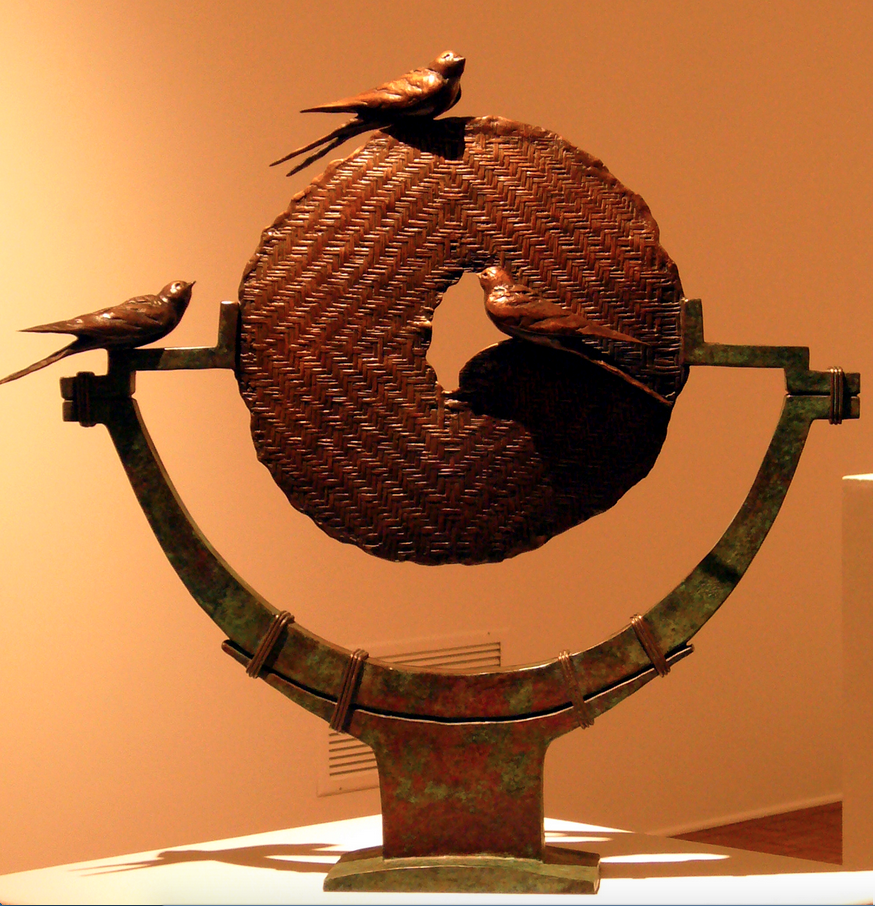Our Tuesday’s Objet series (pronounced “OB-JAY” from the French word for “object”) intends to highlight pieces on display outside the physical confines of our gallery spaces, to draw attention to the art that surrounds us on a daily basis, if we only take a moment to pause and look.
It comes as no surprise that the number of works a museum has on display in its galleries at any given time pales in comparison to the wealth of objects it has behind the scenes. We do our best to bring each beautiful piece in our collections out into the proverbial light from time to time. Luckily there are a few niches around campus where you can find works in our collection, outside of the gallery space. So I hope to draw your attention to them as you go about your day! Here’s to noticing the little things that brighten our lives!
Our Tuesday Objet –as I’m inclined to brand this series, because the aural symmetry tickles me–currently lives in the back case on the third floor of the Elaine Langone Center, adjacent to our back entrance. It is a bronze sculpture titled Swallow’s Basket, by Georgia Gerber.
Gerber grew up in Chester County, Pennsylvania, and received her bachelor of arts right here at Bucknell. She received her MFA from the University of Washington. From 1977-1979 she returned to Bucknell to work as a teaching assistant alongside professor William Lazansky. Together, they developed an alternative method to casting one-of-a-kind bronze sculptures (as opposed to casting in multiples), which excludes the creation of an expensive, labor intensive rubber mold. (Lean more about the process here!)
This petite sculpture is only about 2 feet high. Its rigid architectural base juxtaposes the organic elements it supports. The intricate, basket-like weave of the bronze disk and the 3 swallows which surround it look almost like hand molded, stamped clay. It’s amazing to see the details of other materials which Gerber seamlessly incorporates into her bronze work.
In her artist statement she notes that “I like my sculpture to invite an interaction with its audience. This is often meant to be a direct physical interaction, but always I strive to engage the viewer’s imagination. I tend to present an incomplete visual narrative; a story is suggested, a feeling evoked, and the viewers find themselves providing details.” I find her objective hits home with this sculpture. The disparate elements intertwine beautifully, while still leaving room for further exploration on the part of the viewer. This sculpture fosters pause, like a story begun, but not finished.
These days, Gerber lives on rural Whidbey Island, Washington, with her husband and daughter, and operates her own studio and foundry.
“My husband and I had our first date near the end of my graduate work at the University of Washington. That night I told him I dreamed of having my own studio and foundry in a quiet rural area where I could raise a family and create sculpture. We have been doing just that for 21 years now. What I didn’t tell him was the part about the horses…” — Georgia Gerber (A wonderful reminder that dreams do come true!)


